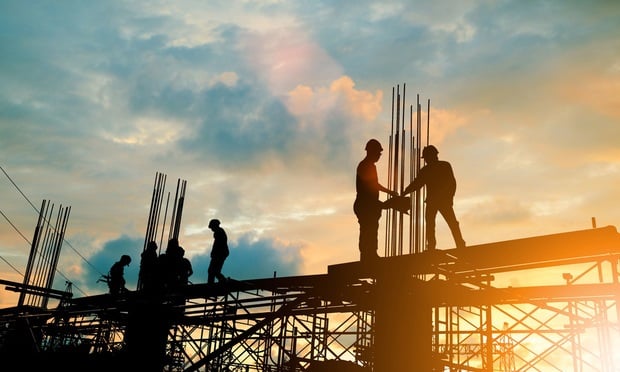New industrial starts in 2025 may sink to their lowest level this decade, having totaled just 86.9 million square feet this year through May, according to CommercialCafe’s new monthly report on industrial construction. New tariffs imposed by the Trump administration could be a major contributing factor.
If that happens, it could reverse CommercialCafe’s expectation that construction starts would resume strongly in 2026.
Elevated construction costs, caused partly by still elevated interest rates, have discouraged new starts. “Perhaps the biggest threat to a rebound in industrial starts, however, is a 50% tariff on imported steel. U.S. firms imported $32 billion in steel in 2024, and the current steel demand far exceeds its current production capacity. Further complicating matters, the U.S. and Canadian steel industries' supply chains are integrated across the border,” the report stated.
Recommended For You
One effect of the higher steel and aluminum tariffs may be to discourage manufacturers from reshoring their operations to the U.S. and encourage them instead to remove production of goods destined for U.S. markets from China to low-tariff nations like Vietnam, India and Mexico.
“The uncertainty of the tariff policy may be a heavier burden on decision makers than the weight of the tariffs established thus far,” commented CommercialEdge director Peter Kolaczynski.
Not only have developers been affected. Leasing activity has also been disrupted. “Uncertainty around tariffs has delayed leasing decisions for many occupiers, slowing the rate at which recently delivered new supply is being absorbed,” the report stated. The national industrial vacancy rate was 8.5% in May. That was 30 basis points below April but 290 basis points higher than in May 2024.
Not all markets have experienced a decline in industrial construction. As of May, 342.3 million square feet of industrial space (1.7% of stock) was underway nationally, and 117.8 million square feet had been delivered, according to Yardi Research data cited.
In Dallas-Fort Worth, 28.09 million square feet of industrial space – 2.8% of its total stock -- were in the pipeline, followed by Phoenix with 16.87 million square feet, Houston with 14.9 million square feet – more than double the amount a year earlier, Memphis with 12.52 million square feet, and Atlanta with 10.19 million square feet. Boston had the smallest pipeline, with just 0.99 million square feet under construction.
The average in-place rent for industrial space nationwide was $8.54 per square foot, up five cents from April and 6.3% over the year.
The national spread for a lease signed in the past year and the overall in-place average rent was $1.79 in May this year, compared to $2.25 per square foot in May 2024.
Some markets benefited from large average premiums for new space. Bridgeport had the largest spread, with a new lease costing $4.01 more per square foot than the market average. Other markets with large premiums were Miami ($3.82 per square foot), New Jersey ($3.59), Charlotte ($3.58), and Seattle ($3.06).
Rent growth was led by Miami, which saw a 9.8% increase to $12.72 per square foot, despite having the nation’s second-highest vacancy rate at 11.7%. The metro was helped by its significant trade with Latin America and the Caribbean. New Jersey’s rent rose 9.2% to $11.89, with 8.9% vacancy. Others in the top five rent group were Atlanta (up 9.1% to $6.33), Dallas-Fort Worth (up 8.6% to $6.46) and Philadelphia (up 8.3% to $8.33).
During the period from January to May, $21.4 billion in industrial property changed hands, at an average price of $133 per square foot. Phoenix performed exceptionally well with $862 million in sales at an average of $187 per square foot and enjoys a high level of absorption.
New Jersey recorded the nation’s highest sales volume at $1.482 billion, at prices that were the third highest in the country at $276.08 per square foot, behind only Los Angeles and Orange County. Other metros with high sales volume included Dallas-Fort Worth ($1.275 million), Chicago ($1.049 million), Los Angeles ($929 million) and Phoenix. Others in the top 10 were Twin Cities, Inland Empire, Orange County, Houston and Charlotte.
Regionally, several Western markets had vacancy rates higher than the national average, including Denver, which had an 11.1% rate. The most expensive markets were in California. Phoenix was the leading industrial development hub with 16.9 million square feet underway – well below the 38.7 million under construction in May 2024.
In the Midwest, the highest industrial rent was in the Twin Cities, still below the national average. Chicago led the region in investment. Most markets rose above the national vacancy rate “displaying increased resilience and high industrial demand,” the report stated.
In the South, Atlanta and Tampa were among the few markets to maintain industrial vacancy rates below the national average. Baltimore topped the region in sales prices selling at $176 per square foot.
In the Northeast, New Jersey was the top industrial market. Newly signed leases rose to $15.48 per square foot compared to in-place rents averaging $11.89. Boston also saw strong rent growth and had the smallest pipeline of all US metros. Bridgeport was the most affordable market for buyers and had the lowest industrial vacancy rate among top US markets. Philadelphia led the nation with 8.4 million square feet under construction.
© Touchpoint Markets, All Rights Reserved. Request academic re-use from www.copyright.com. All other uses, submit a request to [email protected]. For more inforrmation visit Asset & Logo Licensing.






